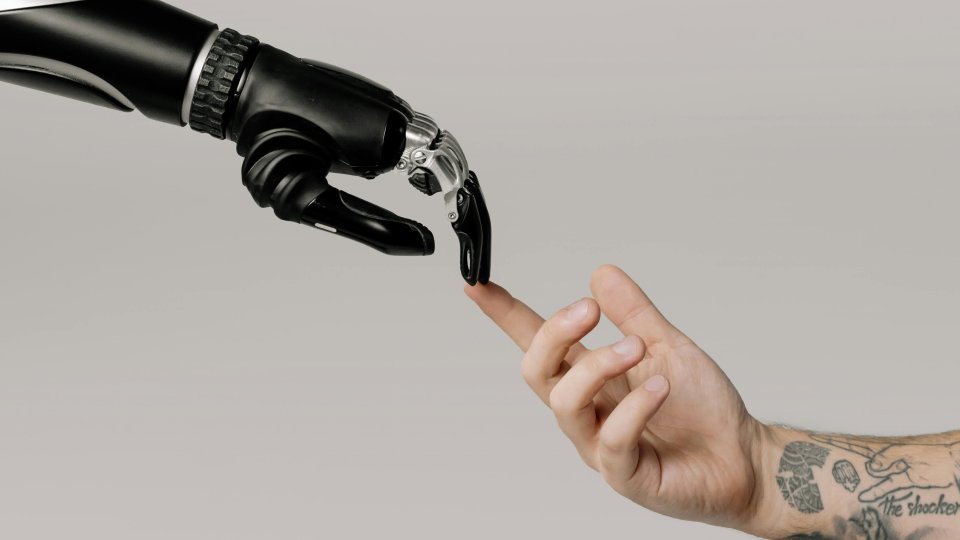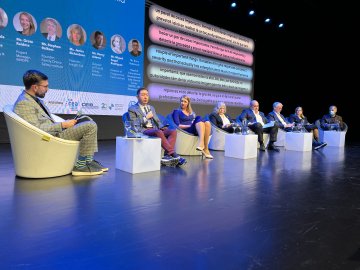The way synthetic media is being used worldwide is constantly changing and evolving. While the rise of this form of media raises concerns about its potential misuse, its ability to improve fields such as education, healthcare, and entertainment has also been demonstrated. In this article, we explore some of the ways synthetic media and the technology used to create it is positively impacting society, and where it has the potential to transform industries and help those in need.
Supporting Education
The potential for synthetic media and AI technology to be positively used in education is an evolving discussion that is expected to change dramatically as we learn more about its possibilities and await appropriate policies and guidance for the education sector.
Whilst this field continues to adapt, guidance from UNESCO has found that AI-generated media has the potential to make learning more accessible, with AI-generated synthetic audio and caption systems having the potential to assist individuals with hearing or visual impairments. Text-to-speech and speech-to-text AI models could also help young people with special educational needs to read, ask questions, and communicate with friends more easily.
UNESCO also highlights how forms of synthetic media may help 'educators and learners to generate appropriate educational materials such as lesson plans, quizzes, and interactive activities.’ Alongside this, with emerging forms of technology, like virtual reality (VR) and augmented reality (AR) being used more frequently, synthetic media has the potential to enable students to explore complex subjects such as history, science, or engineering through interactive and synthetic simulations of environments.
Improving Accessibility
As we’ve mentioned, accessibility is an area where synthetic media is making a difference and transforming communication for individuals with disabilities, with the help of synthetic voices to read digital content aloud, and real-time speech-to-text transcription during conversations or presentations.
However, synthetic media can also help break down language barriers, making information more accessible across the globe. AI translation services can instantly convert text or speech into multiple languages, and even synthetically translate audio from one language to another, allowing people to communicate more effectively and access the same resources.
Providing Entertainment
On our screens, we are seeing another area where synthetic media and generative AI are making significant strides, with the creation of hyper-realistic digital characters and visual effects being used across the film and entertainment industry.
Alongside this, synthetic media has been used to realistically de-age characters and recreate voices of actors for films and tv shows, whilst producing lifelike characters that can interact with human actors. We’ve also seen in the news how films now blend live-action footage with CGI created using generative AI, helping to make fantasy worlds and action scenes more realistic.
Enhancing Healthcare
In healthcare, synthetic media is playing a crucial role in improving both medical training and patient care. AI-generated virtual patients are now being used to train medical professionals, offering a risk-free environment to practise complex procedures and diagnose conditions. These simulations can mimic a wide range of scenarios, from routine check-ups to rare medical emergencies, helping doctors and nurses hone their skills before treating real patients.
Advancing Environmental Conservation
Synthetic media is also contributing to environmental conservation efforts. AI-powered image recognition and drone technology are being used to monitor wildlife populations and detect illegal activities like poaching. These tools enable conservationists to gather data more efficiently and intervene in real-time, protecting endangered species and preserving biodiversity
Find Out More
Like any form of technology, the benefits and considerations around synthetic media will continue to change as the technology advances, and more is known about how it can be used. Synthetic media has the potential to improve the world in many different ways, however, there are negative aspects as well. It’s important to be aware of the support and guidance available to ensure this media and technology is used appropriately and safely.
To find out more about synthetic media, deepfakes, and all forms of AI-generated content, you can visit SWGfL’s Synthetic Media Hub, which provides advice for schools, adults, parents and carers about what synthetic media is, and where to go for support if you see synthetic harmful or sexual content.
To find further guidance, resources and support on AI technology, you can also access our Artificial Intelligence and Online Safety Hub.






